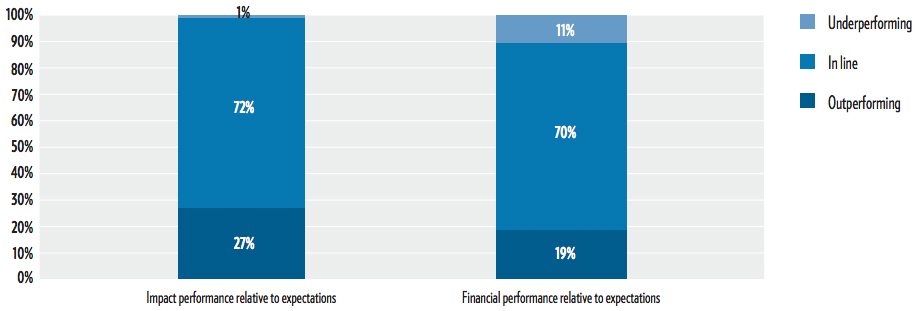Investors committed more than $15 billion to impact investments in 2015—and plan to allocate even more this year, according to the Global Impact Investing Network (GIIN).
In a survey of 158 impact investors managing $77 billion, GIIN found that 79% planned to maintain or increase their impact investments in 2016. In total, respondents said they planned to commit nearly $18 billion to the sector this year.
Nearly three quarters said their investments performed as expected in 2015, with 19% reporting outperformance versus expectations. Just 11% said their impact investments underperformed last year.
For the most part, investors said they expected returns equivalent to the market rate, after adjusting for risk. However, 25% said they targeted returns slightly below the market rate, and 16% expected performance in line with capital preservation.
The bulk of 2015 investments ($7.2 billion) came from asset managers, who said they invested primarily on behalf of family offices and foundations. These limited partners said they preferred to make impact investments through managers due to their expertise and access to opportunities, as well as for the diversification and risk benefits of investing in a fund rather than investing directly.
Respondents preferred private investments as instruments for impact investing, with 70% investing in private equity and 56% in private debt. Larger impact investors, including pension funds and insurers, also favored real assets.
More than a third of investments were made in North America. Other top locations for impact investments included Sub-Saharan Africa, Latin America, and Western Europe.
“We are encouraged to see the development of a truly diverse and global impact investing market,” said Amit Bouri, GIIN CEO. “This survey highlights a thriving market being built across geographies, sectors, and asset classes.”
Nearly all investors (95%) targeted social impact goals, while 52% focused on environmental impacts. Top social goals included access to finance, employment generation, health improvement, education, and income growth. Environmental investments, meanwhile, focused primarily on renewable energy and energy efficiency.
As for the social and environmental impacts of the investments, 99% said they achieved above or in line with expectations.
 Source: GIIN’s “Annual Impact Investor Survey 2016“
Source: GIIN’s “Annual Impact Investor Survey 2016“
Related: E&Fs Warm to Impact Investing

 (Art by John Cuneo)
(Art by John Cuneo)